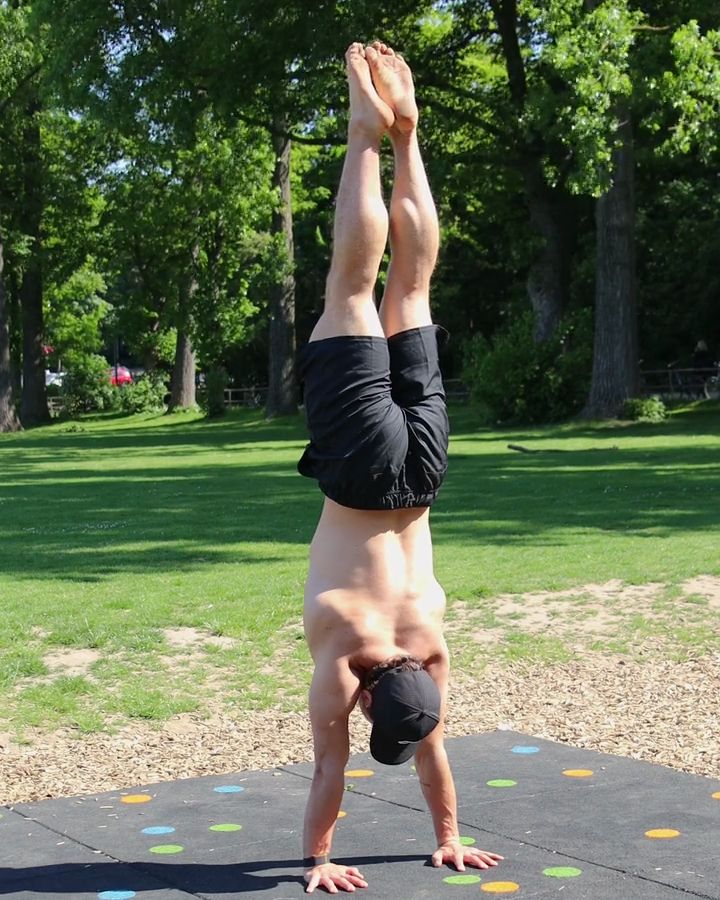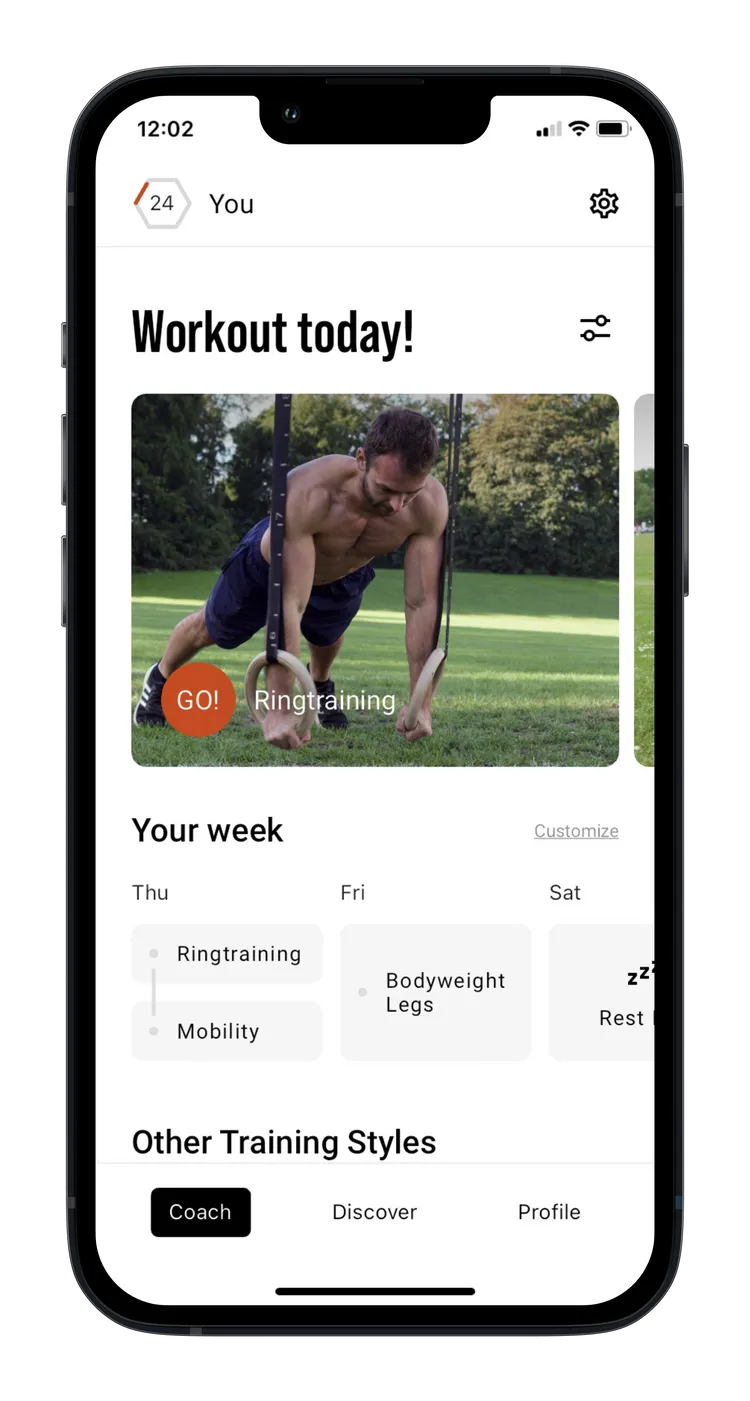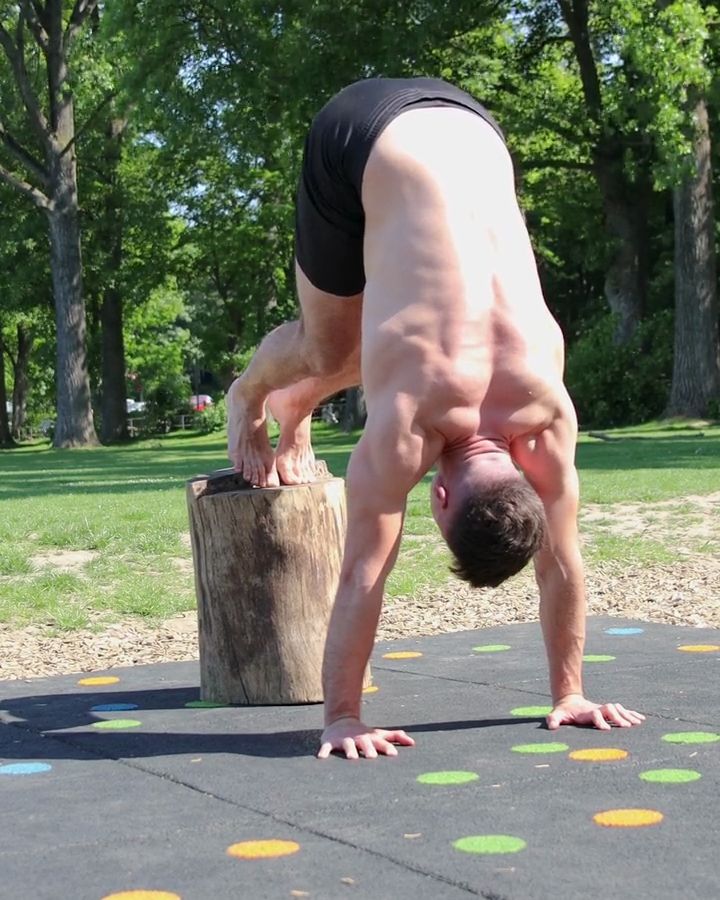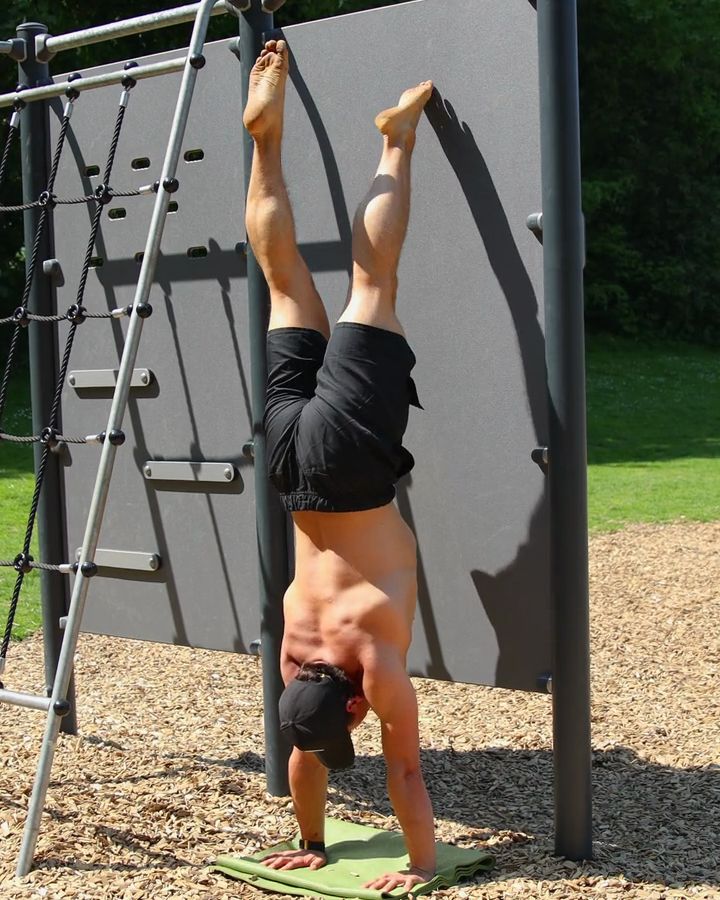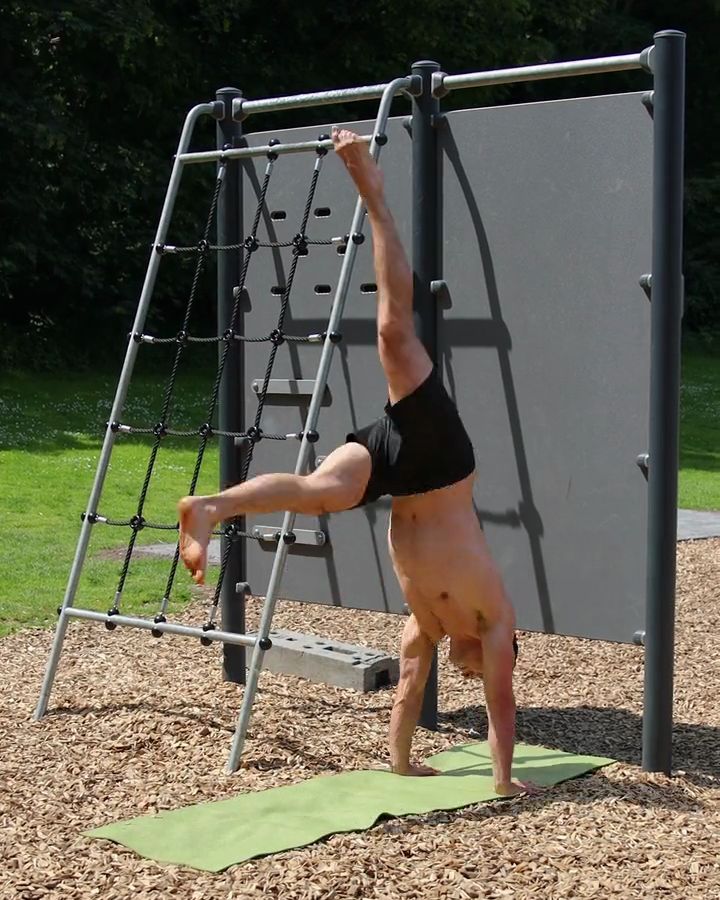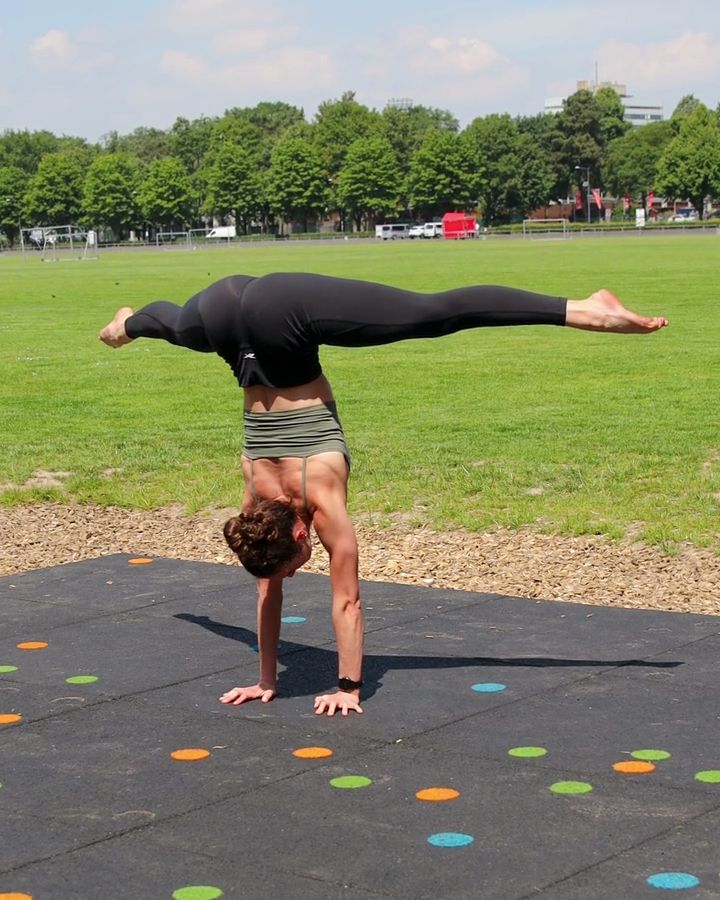Handstand
The handstand is one of the most fundamental and significant exercises in calisthenics. It requires not only strength in the shoulders, arms, and upper back but also balance and precise body control. Regular practice is the key to mastering the handstand.
In addition to the handstand, there are other challenging exercises, such as the Handstand Push-up, where you bend your arms and push yourself back up while in a handstand. An ideal preparatory exercise for this is the Pike Push-up. This variation combines the benefits of the handstand with a more stable starting position and targets similar muscle groups, making it especially suitable for beginners.
The Swiss Handstand is a challenging progression where you powerfully press into a handstand with straight arms—a great challenge for advanced athletes.
Handstand - the correct execution
- Go into the handstand
- Keep your legs close together
- Make sure your core is stable
- Tilt your pelvis backwards (PPT)
- Arms are maximally extended
- Try to control the balance with your fingers
- Try to avoid balancing movements over the hips or shoulders
The exercise Handstand is intended to be used as a technique exercise.
Which muscles are trained by Handstand?












Primary trained muscles for Handstand
Upper Back - The muscles in the upper back, including the trapezius and rhomboid muscles, help move and stabilize your shoulders. They pull the shoulder blades together and support posture.
Secondary trained muscles for Handstand
Triceps - The triceps brachii muscle is located at the back of your upper arm. It extends your arm at the elbow and also helps move the arm backward.
Side Delts - The lateral part of the deltoid muscle, also known as the lateral shoulder, is located on the outside of the shoulder. It is the main muscle responsible for lifting the arm sideways. The lateral shoulder is particularly active when the arm is extended away from the body, such as during lateral raises or lifting objects to the side. It plays a key role in arm abduction and shoulder stabilization.
Front Delts - The front part of the deltoid muscle, also known as the anterior shoulder, is located at the front of the shoulder. It is primarily involved in the forward movement of the arm, such as lifting the arm forward. It also assists in the internal rotation of the arm. This muscle is engaged in activities that involve lifting objects in front of the body or pushing forward.
Forearm - The forearm muscles are divided into flexors and extensors. The flexors bend your wrist, while the extensors straighten it.
Alternative variants of Handstand:
Assisted Handstand
The supported handstand on an elevated surface allows you to practice the handstand position while using a raised platform like a bench or box for support. This variation is especially useful for strengthening the shoulder muscles and balance without bearing the full body weight. Compared to the freestanding handstand, the elevated support reduces complexity by focusing more on the shoulder muscles and gradually building up balance training.
Necessary equipment

Assisted Handstand - the correct execution
- Start in a handstand with your feet on a box
- Place your hands as close as possible to the box
- The hips are the highest point and your upper body is in extension of the arms
- Arms are stretched and shoulders are pulled up to the ears
- Keep tension in the torso
Handstand Swimmer
The handstand swimmer against the wall uses the static hold of the handstand while the legs are alternately moved forward and backward in a swimming motion. The wall serves as a stabilization aid to support balance, while the dynamic leg movement further challenges core stability and shoulder muscles. Compared to the freestanding handstand, this variation offers increased safety and allows you to focus more on the coordination and control of leg movements.
Necessary equipment

Handstand Swimmer - the correct execution
- Start in a handstand on the wall
- Push out from your shoulders
- Activate your torso and buttocks
- Your pelvis is upright (PPT)
- Alternately release one foot from the wall
- Try to keep the contact to the wall as light as possible
- Keep in mind that you still need some energy for the release of the handstand
Handstand Upswing
The handstand kick-up against the wall is ideal for handstand beginners who feel unsure about kicking up. The wall provides support and prevents tipping over forward, allowing you to practice the kick-up into the handstand safely and with confidence.
Necessary equipment

Handstand Upswing - the correct execution
- Start off by standing in front of a wall
- Make sure there is enough space next to you
- With this exercise you learn to swing up into a full handstand
- Place your hands about 30 cm from the wall
- Now swing your swing leg (back leg) over your head in extension of your torso.
- Bring also your jump leg into the extension of the upper body
- Try to find the optimal power for you to swing up into the handstand.
- Hold the position for a maximum of one second and return to the standing position in a controlled manner
- Try not to touch the wall during the exercise
- Use the wall only if you have swung up too much and should tip over. See last video
This could also be interesting
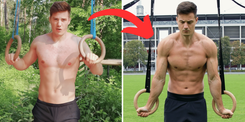
Calisthenics Body Transformation – How to Build a Strong, Lean, and Athletic Physique
Transform your body with Calisthenics! Build muscle, burn fat & achieve a shredded physique with bodyweight training. See real before & after results!
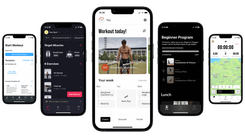
The Best Fitness Apps in 2025: Our Top 10 Recommendations
Don’t miss the best fitness apps of 2025: surprising favorites, free options, and perfect tools for your workouts. Find the ideal app today!
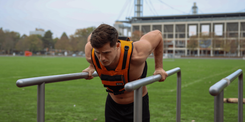
Complete Calisthenics Skills List – 40+ Exercises from Beginner to Pro
Which calisthenics skills should you learn first? And which ones will really help you progress? In this article, you’ll find a complete list of over 40 exercises – from the very basics to the toughest moves for professionals. Each exercise comes with instructions, so you can immediately integrate them into your training.
